The War Against the Horse
It is a sad fact of American life that horse killing is not an anomaly. In fact, such episodes have been playing out across our land for decades.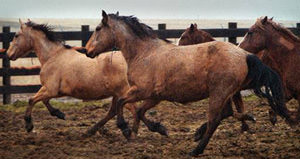
Update: On June 16th, the two men accused of shooting and killing five wild horses on public lands changed their pleas from not guilty to guilty. They each face up to a year in jail and a fine of up to $100,000. They will be sentenced on September 14th in Reno. Federal prosecutors received 24,000 letters and emails about this case, from around the world.
On June 22, two men will go on trial for allegedly killing five wild horses in Nevada. The federally protected horses were gunned down in December at a time when the debate over the plight of the country’s mustangs had reached a fever pitch. Last week, the men accused of the killing appeared in a Reno courtroom and pleaded not guilty to the crime, as a crew of citizens who have devoted much of their lives to defending wild horses looked on.
It is a sad fact of American life that this horse killing is not an anomaly. In fact, such episodes have been playing out across our land for decades. As I learned while working on my book “Mustang: The Saga of the Wild Horse in the American West,” a two-pronged war against wild horses is under way and at this moment the country’s great icon of freedom is losing.
One front in this war involves agencies tasked with wild horse management, primarily the Bureau of Land Management. It recently carried out a mandated although deadly mustang roundup in Nevada during which foals were harried by helicopter over rough terrain until their hooves apparently fell off and other horses later died of stress and exhaustion.
The other front involves lone operators who venture into the wilderness and kill wild horses—which is illegal, although arrests are rarely made and when they are, the cases often fall apart. Many of these incidents have occurred in Nevada, where more than half of the country’s wild horses still roam, having gone there like others to hide. “What happens in Vegas stays in Vegas” may be a cute reflection of the local condition, but behind that is another statement that surfaced in an official piece of state travel literature several years ago: “Seize life and throttle it like a rag doll.”
I learned about the war in 1998, when I saw a small newspaper item that said six wild horses had been gunned down outside Reno in the Virginia Range. Two days later, the body count had grown to 12, and shortly after that, by New Year’s Eve, 34 mustang carcasses were found in the mountains outside Reno. Within days the tip lines were flooded with calls. The incident came to be known as “the Christmas mustang massacre,” and a few weeks after the discovery of the bodies, there were three arrests; two of the men were Marines, and one was stationed at Twentynine Palms, Calif.
That’s both the name and location of my previous book, about another war on the homefront; in this one, two girls were killed by a Marine in a scenic desert town, shortly after the Gulf War. In fact, I was finishing up “Twentynine Palms” when I learned of the wild horse killings. Partly because it converged thematically with the mustang incident, but also because horses had once saved my family’s life and I had long wanted to return the favor, I knew immediately that my next book would be about wild horses, and I would start with the incident that had called me.
To understand it, I had to find out a few things: How did mustangs come to live in the mountains outside Reno? Who would go out and shoot them? And, more important, why? These questions began a 10-year journey during which I found out that the story of the wild horse in America is one of the greatest suppressed stories in our history (not in a conspiratorial sense), yet it goes right to the heart of who we are as Americans. Quite simply, without the mustang, we would not be here: the wild horse blazed our trails, and fought our wars, and, as I soon learned, even gave birth to America. Who among us has not heard the famous Longfellow poem called “Paul Revere’s Ride?” Well, the poem does not tell us that Revere’s horse had a name — it was Brown Beauty. She had wild horse bloodlines and, as she carried Revere through the night, her hoofsparks “kindled the land into flame,” and she kept on running as the enemy closed in, and then Revere issued the fateful call — “the British are coming” — thus triggering the shot heard round the world — the one that reverberates to this day in many places and in many ways, but most of all in our own dream of who we are as a nation.
During my journey on the wild horse trail, I learned many other astonishing things. One of them is that wild horses were here before we were. In fact, the horse is North America’s gift to the world. It is indigenous to our continent, first appearing on this land 55 million years ago. Over time, it cast off various lines; some perished and others didn’t. As it got bigger and faster and began to resemble the fleet, big-hearted athlete of the modern plains, it moved north across the Bering land bridge during the Ice Age, fanned out from Siberia to the rest of Asia, Europe and the Middle East, then became extinct here. When Europeans reintroduced horses to the Americas in the 16th century (they have been linked by DNA to the horses of the Ice Age), some escaped and formed wild herds, and others washed ashore during shipwrecks on the East Coast (most likely including an ancestor of Paul Revere’s horse).By 1900, there were 2 million wild horses in America. By then, the train and car had arrived and horses had done their job: Many had been pressed into service during the frontier wars and had died in battle. Others were killed because they belonged to the tribes. A critical part of the government campaign to vanquish Native Americans was to strip them of their ponies. Thousands were killed during Army massacres, and when it was all over, and the tribes had been dismounted and moved to reservations, the federal caretaker for Chief Joseph of the Nez Perce asked if there was anything he wanted. He requested a horse. His caretaker didn’t understand the significance of the request and denied it—regretting the decision years later, as an old man, long after Chief Joseph had died.
With the frontier closed, mustangs became a cash crop: Hundreds of thousands of them were slaughtered and sent to Europe in tin cans. Others were shipped abroad for foreign wars. Until a Nevada character named Wild Horse Annie came along in 1950 and waged a 20-year battle for legal protections after seeing dying mustangs being hauled to a slaughterhouse, horse roundups and massacres had gone unchecked for decades. Today there are about 20,000 mustangs left on the range. Their major predators, such as the mountain lion, have been all but wiped out, and for more than a century their biggest enemy has been man, who desires the land where the mustang roams—and things that it offers. As I heard many times while working on “Mustang,” wild horses are regarded in some circles as “pests” or even “thieves”—animals that steal food from cows, which also graze on public lands in the West (at a ratio of about 50 to 1). And so the double-barreled war continues, with wild horses fending off a brutal campaign fueled by greed but stoked by a strange quirk in the American personality, the one that loves freedom and sings “don’t fence me in” while walling up what’s wild and selling it to the lowest bidder. As I wrote in “Mustang,” we may be fighting wars around the world, but in the West, to paraphrase the great environmental writer Bernard DeVoto, we are at war with ourselves.
As a result, ours is a history that includes a long list of mustang killings; I’ll skip the incidents that occurred before federal protection went into place in 1971 (the law that was unraveled under the Bush administration and remains in tatters, although a new law called the ROAM Act—Restore Our American Mustangs—awaits attention in Senate committee after passing the House last year by a wide margin). But for the record, let this be known: In 1973, in Howe, Idaho, ranchers on snowmobiles and saddle horses chased a herd of 32 mustangs for 45 days, driving them into a narrow canyon and trapping them on a shelf. Some jumped off the cliff to their deaths. Others panicked and jammed their hoofs into rocks, breaking their legs. “We didn’t know what to do,” one rancher said. “We disposed of them by cutting their legs off. I mean it was gruesome.” A few days later, the dead and mutilated horses were found at the foot of the cliff.
In 1989, over a period of months in Nevada, at least 500 mustangs were mowed down by rifle fire. When coyotes came to feed, they too were killed. In 1992, 54 burros were gunned down on Good Friday outside Oatman, Ariz. In the 1998 case mentioned above, 34 wild horses were gunned down outside Reno at Christmastime.
In 1999, four wild horses and two burros in the Spring Mountains in Nevada were shot and killed. (In the same year and the same state, this time in Fallon, a grazing and military town, eight cows were raked with automatic weapons, one while giving birth, by two Navy airmen). In 2000, 37 wild horses were shot to death in the Rock Springs area of Wyoming—one of the largest federally sanctioned livestock grazing regions in the country.
In 2001, seven wild horses were shot to death in eastern Nevada, and six more later that year. In 2002, nine wild horses were gunned down by two ranchers in Utah. In 2003, as many as 500 Nevada mustangs—known for the record as the Fish Creek horses—died after being rounded up in an ongoing territorial dispute between a pair of Shoshone Indians and the feds; they were adopted by a rancher in California but left without food in BLM corrals as they awaited relocation and later were dumped in the wilderness after they starved to death. In 2006, a mare and stallion were shot to death in Gerlach, Nev. The mare had aborted her foal during the incident and it too perished. In fall of that year, seven horses were shot and killed near Pinedale, Ariz. The BLM offered rewards, but no one has come forward.People often ask me if I would have changed my mind about writing my book had I known how dark this story would get. The answer is no; I had wanted to investigate an incident and bear witness and it helped that a few months after the Reno massacre I met the lone survivor of it—an astonishing filly who was found near starvation in a gully during a winter storm, watched over by a band of bachelor stallions who could not provide her with mother’s milk but could fend off predators. As I wrote in “Mustang,” her rescuers named her Bugz because she was permanently spooked, not unlike another twitchy Nevada character, Bugsy Siegel, said to have been demon-possessed and therefore buggy, and no doubt he was, having witnessed — and been the progenitor of — great rivers of desert carnage. For the next 10 years, Bugz was my guide; during my visits to Nevada, I spent time with her at Wild Horse Spirit, the sanctuary where she lived in Carson City, and when I couldn’t, we had conversations the old-fashioned way—across time and space, on the wind, where the great four-leggeds who made this nation were running free forever, out there in the American dreamtime. What Bugz told me was powerful and beyond words; whenever this story knocked me to my knees in shock and awe, I would feel her presence, and her spirit, and her will to go on, and last year when she passed away due to complications from an ongoing kidney ailment caused by poor nutrition after the massacre and no doubt a broken heart, I thanked her for enduring long enough for me to finish my book, for I could not have done so without her.
I am not so naive as to think that one book would bring about an end to the scourge of wild horse killings in our land. This wound is open, deep and cannot be easily healed. But it has been gratifying to note that since “Mustang” was first published in 2008, there has been a slight shift in the atmosphere. Many people have joined a nationwide, grass-roots effort on behalf of wild horses (and burros—protected by the same law) that had been in place for some time, taking the call for mustang preservation to a new level. Various legal actions have resulted in good news for wild horses; one roundup was stopped in Colorado last year, and a critical aspect of federal mustang management—the housing of wild horses in crowded corrals after they are rounded up—is now under question. And the Bureau of Land Management itself may be reassessing its own policies, in the wake of increasing scrutiny of its practices.
But perhaps most heartening of all is that as I travel the country and talk about our war against the wild horse, I have learned that the mustang is the one issue, if I may reduce this magnificent creature to an overused word, that cuts across all party lines. In fact, it is through the wild horse that I see America and it is through the wild horse that Americans of all persuasions are coming together.
At my talks in bookstores, libraries and other events, I meet cowboys, kids, tea partyers, tree huggers, Ron Paul freaks, people who just got foreclosed, war veterans, recovering Democrats, reality show rejects and even men who have killed mustangs just because they could and now regret their role in the decimation of our great partner and icon. Last year, one of these men approached me in tears and took my hand in both of his and said he was sorry. He held my gaze and my hand for a few seconds and his grip was sturdy. Then he shambled off like a mirage, like Shane in the movies, as cowboys always do, but he wasn’t on a horse and he knew that there weren’t very many left, and my guess is that he didn’t have a job and probably had pawned his gear. And that’s exactly what’s going to happen to the rest of us if we cannot get right by the wild horse; as it goes, so goes a piece of America, and one of these days, bereft of heritage, we may all find ourselves moving on down the road.
Deanne Stillman’s latest book is the widely acclaimed “Mustang: The Saga of the Wild Horse in the American West,” a Los Angeles Times “Best Book ’08” and winner of the California Book Award silver medal for nonfiction. Her book includes an account of the 1998 Christmas horse massacre outside Reno, as well as the story of Bugz. Follow Deanne Stillman on Facebook.
Your support matters…Independent journalism is under threat and overshadowed by heavily funded mainstream media.
You can help level the playing field. Become a member.
Your tax-deductible contribution keeps us digging beneath the headlines to give you thought-provoking, investigative reporting and analysis that unearths what's really happening- without compromise.
Give today to support our courageous, independent journalists.
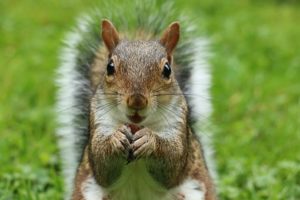
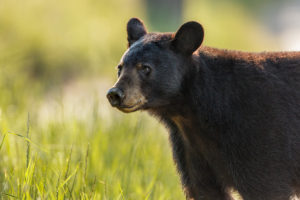


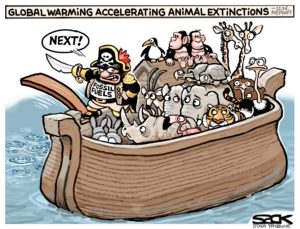
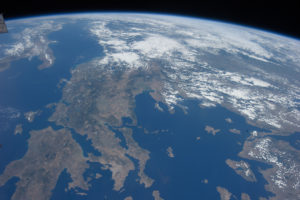
You need to be a supporter to comment.
There are currently no responses to this article.
Be the first to respond.